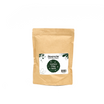Classification of Fertilizers
(Based on Raw Materials)


Why does our partnership matters
For every purchase, we plant 1 TREE to nurture our planet 🌲Together, we are sowing the seeds of change and cultivating a greener, more sustainable world.
Anything else?
Anything else?You willl also receive an official certificate from Greenspark as a token of appreciation for your commitment to the environment! 📜
How do we see the progress?
How do we see the progress?Join us on this remarkable journey towards an impact dashboard.You can see how your eco-smart choice made the world a better place
 View more
View more
Your support empowers reforestation, fights climate change,
and paves the way for a brighter, eco-friendly future.
Join us on this remarkable journey towards a cleaner,healthier planet.
Shop with a purpose, shop with Reencle! 🛒💚
Three Fertilizer Classification Methods
Let’s explore the specific characteristics of different fertilizers.
With the variety of fertilizers available on the market, it can be challenging to choose the right one. Fertilizers can be broadly classified in three main ways:
1) by raw materials
2) by form
3) by effect.
Inorganic Fertilizers and Organic Fertilizers
You often hear the terms inorganic fertilizer and organic fertilizer. These two types differ in their raw materials. Inorganic fertilizers use natural substances such as air or minerals and undergo chemical processing, while organic fertilizers are made from components derived from plants and animals, such as fish scraps or oilcake.
A key characteristic of inorganic fertilizers is that their effects appear quickly. Once applied, they dissolve in the soil's moisture, allowing the roots to absorb them immediately. On the other hand, organic fertilizers cannot be absorbed by roots right away when applied to the soil. They must first be decomposed by microorganisms before they can be absorbed by the roots. Because the effects of organic fertilizers appear gradually, applying them in a hurry after noticing symptoms of nitrogen or phosphorus deficiency may not yield immediate results.
However, organic fertilizers have significant advantages that inorganic fertilizers do not offer. The primary function of inorganic fertilizers is limited to nutrient supply, whereas organic fertilizers contribute to the formation of soil structure (aggregate structure) as microorganisms decompose the organic matter, helping to maintain microbial diversity.There are also differences in the number of nutrients contained in inorganic versus organic fertilizers. Inorganic fertilizers typically contain only one or two key nutrients. In contrast, organic fertilizers are rich in a variety of nutrients. Excluding moisture, they contain carbon, silicon, potassium, lime, nitrogen, phosphorus, magnesium, manganese, and more. Recently, trace elements have been added to inorganic compound fertilizers as well.
In summary, inorganic fertilizers are characterized by their simplicity, while organic fertilizers are known for their diversity. The most practical approach is to use both types in combination to take advantage of their respective strengths.
Organic Fertilizers Have Slow-Acting, Long-Lasting Effects
Organic fertilizers, with the help of soil microorganisms, undergo a process where proteins are broken down into amino acids and then converted into ammonium ions or nitrate ions, allowing them to function effectively as nitrogen fertilizers.
Since their effects appear slowly and last a long time, it is recommended to apply them 2 to 3 weeks before planting seeds or seedlings, giving them time to decompose and be absorbed into the soil.
Compound Fertilizers and Single-Element Fertilizers
You may have also heard the term “compound fertilizer,” which is similar to inorganic fertilizer.
So, what is the difference? In short, compound fertilizer is a type of inorganic fertilizer.
It involves chemically combining two or more of the three essential elements—nitrogen (N), phosphorus (P), and potassium (K)—during the manufacturing process. For example, if a fertilizer bag is labeled as 8-8-8, it means that it contains 8% of N, P, and K each.
When the balance of the three elements is even, it is referred to as a balanced formula. There are also other types, such as the “acidic formula,” where phosphorus is more abundant (e.g., 5-8-5), and the “valley formula,” where phosphorus is less abundant (e.g., 10-2-8).
In contrast, fertilizers that contain only one of the three elements are called single-element fertilizers. Examples include ammonium sulfate or ammonium chloride for nitrogen fertilizers, fused phosphate or superphosphate for phosphorus fertilizers, and potassium sulfate or potassium chloride for potassium fertilizers.
Fertilizers made by mixing several single-element fertilizers are called mixed fertilizers. There are different types of mixed fertilizers, such as "simple mixed" which only combines single-element fertilizers, and "organic mixed" which combines organic fertilizers with inorganic fertilizers, combining the characteristics of both.











